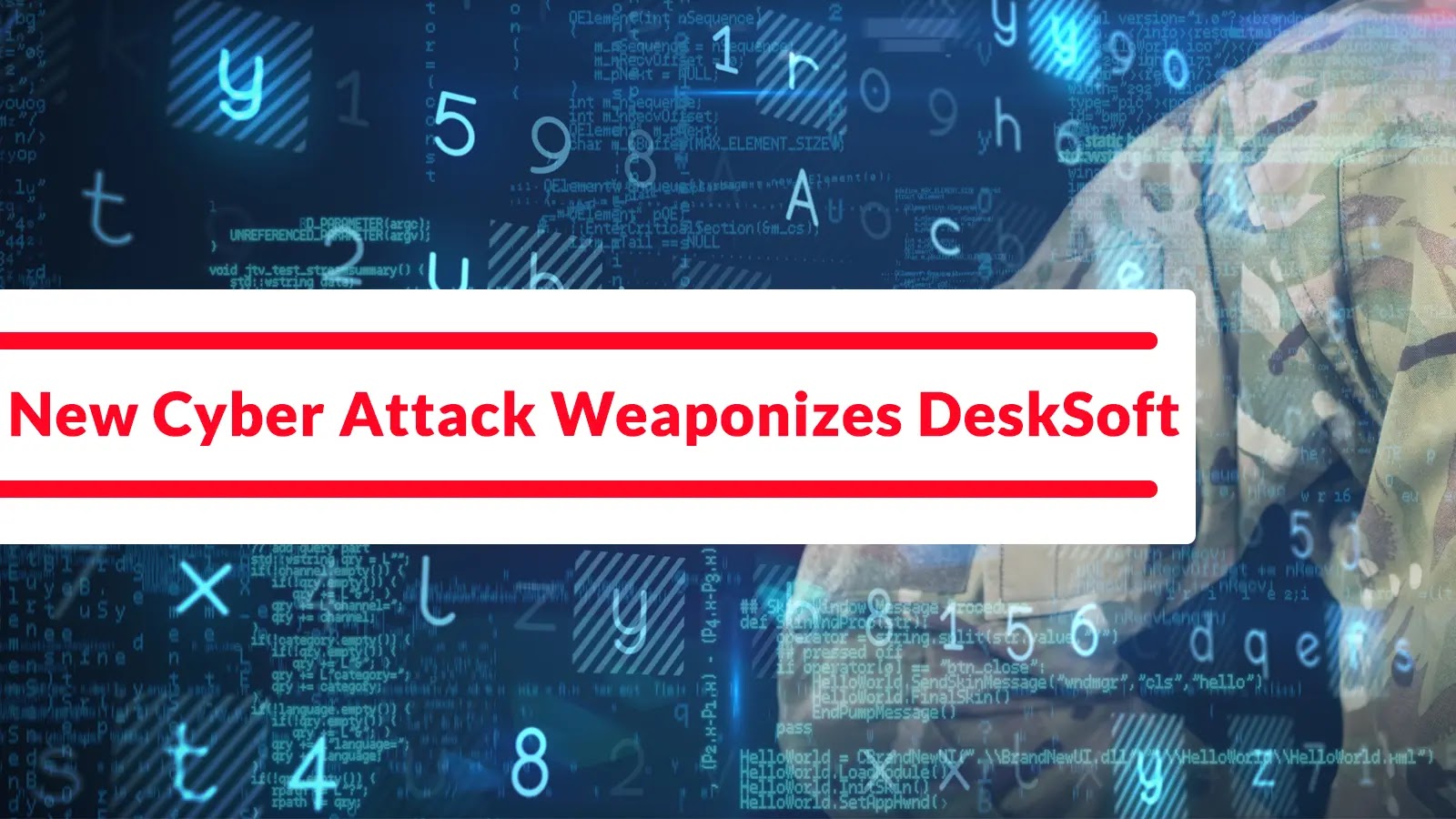
New Cyber Attack Weaponizes DeskSoft to Deploy Malware Leveraging RDP Access to Execute Commands
A Disturbing New Attack Vector: Weaponizing Legitimate Software for Ransomware
The digital landscape is under constant siege, and threat actors consistently refine their tactics to bypass defenses. A recent, highly sophisticated cyberattack highlights a worrying evolution: the weaponization of legitimate software to establish persistent access and deploy highly destructive malware, culminating in coordinated ransomware operations. This incident, leveraging a manipulated version of DeskSoft’s EarthTime application, serves as a stark reminder of the escalating sophistication of modern cyber threats and the critical need for robust defense strategies.
The DeskSoft EarthTime Impersonation: A Trojan Horse for Ransomware
The attack initiates with a deceptive maneuver: the seemingly benign installation of a malicious impersonation of DeskSoft’s legitimate EarthTime application. This isn’t a vulnerability within EarthTime itself, but rather a cunning social engineering tactic coupled with a trojanized installer. Unsuspecting users, likely lured through phishing campaigns or compromised download sites, execute what they believe to be a harmless time-tracking utility. Instead, they unwittingly invite a multi-stage infection onto their enterprise networks.
Upon execution, this malicious EarthTime variant acts as an initial access broker, deploying multiple malware families. The primary objective is to establish persistent footholds, escalate privileges, and ultimately facilitate a devastating ransomware attack. This method bypasses traditional perimeter defenses that might scrutinize unknown executables, as the initial payload appears to be a legitimate, albeit modified, application.
Leveraging RDP for Command Execution and Lateral Movement
A critical component of this attack chain involves the leveraging of Remote Desktop Protocol (RDP) access. Once initial access is gained through the trojanized DeskSoft application, threat actors exploit RDP not just for remote access but for executing commands and facilitating lateral movement across the internal network. This indicates a sophisticated understanding of network environments and common administrative tools. By using RDP, attackers can:
- Execute arbitrary commands on compromised systems.
- Install additional malware payloads without further user interaction.
- Move laterally to other machines within the network, expanding their footprint.
- Exfiltrate sensitive data before encrypting systems.
This tactic bypasses many endpoint detection and response (EDR) solutions that might flag unusual executable behavior but not necessarily malicious RDP usage originating from an already compromised, seemingly legitimate, source.
Multi-Malware Deployment: A Coordinated Ransomware Operation
The attack isn’t limited to a single payload. The initial DeskSoft impersonation paves the way for the deployment of multiple, coordinated malware families. While specific families were not detailed in the initial alert, such multi-stage attacks typically involve:
- Backdoors: To maintain persistent access even if initial vulnerabilities are patched.
- Information Stealers: To harvest credentials, sensitive documents, and other valuable data for exfiltration or future attacks.
- Discovery Tools: To map out the network infrastructure and identify high-value targets.
- Ransomware Payloads: The final stage, encrypting data and demanding a ransom for decryption.
This coordinated approach maximizes the impact of the attack, ensuring redundancy in their access and increasing the likelihood of successful data exfiltration and encryption.
Remediation Actions and Proactive Defenses
Defending against such sophisticated attacks requires a multi-layered approach that addresses both technical vulnerabilities and human factors. Organizations must prioritize the following remediation and proactive measures:
- Endpoint Detection and Response (EDR) & Extended Detection and Response (XDR): Implement robust EDR/XDR solutions that can detect anomalous process behavior, unusual RDP connections, and the execution of suspicious scripts, even from seemingly legitimate applications.
- Application Whitelisting/Control: Implement strict application whitelisting policies that only allow approved applications to run. This prevents unauthorized software, including trojanized versions, from executing on endpoints.
- User Awareness Training: Conduct regular, up-to-date cybersecurity awareness training focusing on phishing, social engineering tactics, and the dangers of downloading software from unverified sources. Emphasize verification of digital signatures and reputable distribution channels.
- Principle of Least Privilege: Enforce the principle of least privilege across your network. Users should only have the necessary permissions to perform their job functions, limiting the potential damage if an account is compromised.
- Network Segmentation: Implement network segmentation to isolate critical assets and limit lateral movement by attackers even if initial access is gained.
- Strong RDP Security: Secure RDP access with strong, unique passwords, multi-factor authentication (MFA), and strict access controls. Monitor RDP logs for unusual activity.
- Regular Backups: Maintain regular, off-site, and immutable backups of all critical data. Test your backup recovery process periodically to ensure effectiveness in a ransomware scenario.
- Patch Management: Ensure all operating systems, applications, and network devices are regularly patched and updated to address known vulnerabilities. While this attack didn’t directly exploit a CVE in DeskSoft, robust patch management closes common entry points.
Tools for Enhanced Security Posture
| Tool Name | Purpose | Link |
|---|---|---|
| CrowdStrike Falcon Insight | Endpoint Detection and Response (EDR) with behavioral analytics | https://www.crowdstrike.com/products/endpoint-security/falcon-insight-edr/ |
| Microsoft Defender for Endpoint | Comprehensive EDR and vulnerability management for Windows environments | https://www.microsoft.com/en-us/security/business/endpoint-security/microsoft-defender-for-endpoint |
| Carbon Black Cloud Endpoint Standard | Behavioral endpoint detection and response | https://www.vmware.com/products/carbon-black-cloud-endpoint.html |
| AppLocker (Windows) | Application whitelisting and control built into Windows | https://docs.microsoft.com/en-us/windows/security/threat-protection/windows-defender-application-control/applocker/what-is-applocker |
| Wireshark | Network protocol analyzer for investigating suspicious network traffic | https://www.wireshark.org/ |
Conclusion
The weaponization of legitimate software, as demonstrated by the DeskSoft EarthTime impersonation attack, marks a significant tactic evolution for cybercriminals. It underscores the ongoing need for organizations to adopt a proactive and adaptive cybersecurity posture. Relying solely on signature-based detection is no longer sufficient. Instead, a combination of behavioral analytics, strict access controls, robust awareness training, and prompt response capabilities are essential to mitigate the risks posed by these increasingly sophisticated and deceptive campaigns.





